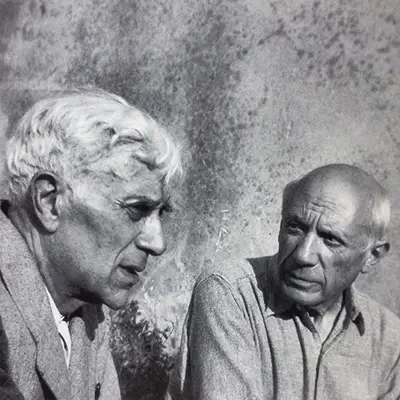Georges Braque was brought up in Le Havre, France having been born in Argenteuil, Val-d'Oise. This region was made famous for the artistic work of Claude Monet here. Georges came from a relatively modest background and was expected to continue in the family trade of domestic refurbishments. Braque became a student at the École des Beaux-Arts, in Le Havre in 1897 and spent three years here studying art history and the techniques used by the great masters. Paris-bound Georges then continued his development in the French capital, attending the Académie Humbert, where he met Marie Laurencin and Francis Picabia.
Artist Braque would then change his direction several times in the course of his career, influenced by a multitude of significant artists who overlapped the turn of the century. The likes of Paul Cezanne, Pablo Picasso, Henri Matisse and Juan Gris would all give new ideas to this ambitious painter. Georges Braque essentially moved from impressionist to fauvist and then on towards Cubist art. His colour schemes therefore became more and more subdued, as the influence of war would cause him to dilute their brightness of his work.
His later years also brought in new mediums such as sculpture and lithographs. This diversity of work was similar to the ambitious work of Picasso, with whom he was firmly connected. Picasso himself worked in ceramics and sculpture, to great effect. The essence of Cubism involved reducing the visual form structure down to a geometric form, or, a cube. House at L'estaque was one of his Cubist artworks and outlines his method of fragmenting an image.


